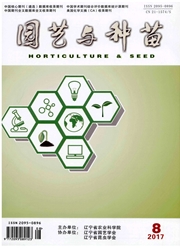

 中文摘要:
中文摘要:
为探讨真菌诱导子对龙眼胚性愈伤组织生长及多糖含量的影响。以龙眼胚性愈伤组织为材料,采用单因素分析法探究了真菌诱导子种类、诱导时间和浓度对龙眼胚性愈伤组织生长和多糖积累的影响。结果表明,不同真菌诱导子处理下龙眼胚性愈伤组织中多糖含量由高到低排序分别为:龙眼拟茎点霉〉胶孢镰刀菌〉尖孢镰刀菌;采用100 mg/L浓度的龙眼拟茎点霉诱导子诱导15 d,龙眼胚性愈伤组织多糖含量最高,比对照提高了61.34%,且不同处理间存在显著差异。但真菌诱导子处理下龙眼胚性愈伤组织生长状态较差,且增殖率显著下降。龙眼拟茎点霉作为龙眼病原内生菌,其活性诱导物能促进龙眼胚性愈伤组织中多糖积累,从而一定程度上提高植物的免疫防御能力。研究结果为探究真菌诱导子对龙眼多糖合成和代谢机理的研究奠定基础。
 英文摘要:
英文摘要:
In this experiment, the embryogenic calli were used as the materials to investigate the influence of the types, induction time, and concentrations of fungal elicitors for the growth and the accumulation of polysaccharide in longan embryogenic calli by single factor analysis in Dimocarpus longan Lour. The results showed that the order of the polysaccharide contents under different fungal elicitors was: Phomopsis longanae Chi〉 Fusarium subglutinans Wollenw.et Reinking 〉Fusarium oxysporum. Treated by 100 mg/L Phomopsis longanae Chi elicitor for15 d, the accumulation of polysaccharide reached the highest level. Moreover, there were significant differences between different treatments. However, the proliferation and growth situation was worse than that of the control.Studies suggested that P. longanae Chi was longan fruit pathogenic endophyte, the active inducer of P. longanae Chi could observably promote longan polysaccharide accumulation in embryonic callus and improve the immune defense ability of plants. The above results could provide the scientific basis for studying longan polysaccharide synthesis and metabolic mechanism.
 同期刊论文项目
同期刊论文项目
 同项目期刊论文
同项目期刊论文
 Superoxide dismutase multigene family in longan somatic embryos: a comparison of CuZn-SOD, Fe-SOD, a
Superoxide dismutase multigene family in longan somatic embryos: a comparison of CuZn-SOD, Fe-SOD, a Analysis of the global transcriptome of longan (Dimocarpus longan Lour.) embryogenic callus using Il
Analysis of the global transcriptome of longan (Dimocarpus longan Lour.) embryogenic callus using Il Evaluation of suitable reference genes for normalization of microRNA expression by real-time reverse
Evaluation of suitable reference genes for normalization of microRNA expression by real-time reverse Comparative Analysis Reveals Dynamic Changes in miRNAs and Their Targets and Expression during Somat
Comparative Analysis Reveals Dynamic Changes in miRNAs and Their Targets and Expression during Somat Endogenous target mimics down-regulate miR160 mediation of ARF10, -16 and -17 cleavage during somati
Endogenous target mimics down-regulate miR160 mediation of ARF10, -16 and -17 cleavage during somati ... of suitable reference genes for normalization of microRNA expression by real - time reverse tran
... of suitable reference genes for normalization of microRNA expression by real - time reverse tran Identification of a PTC-containing DlRan transcript and its differential expression during somatic e
Identification of a PTC-containing DlRan transcript and its differential expression during somatic e Endogenous target mimics, microRNA167, and its targets ARF6 and ARF8 during somatic embryo developme
Endogenous target mimics, microRNA167, and its targets ARF6 and ARF8 during somatic embryo developme 期刊信息
期刊信息
